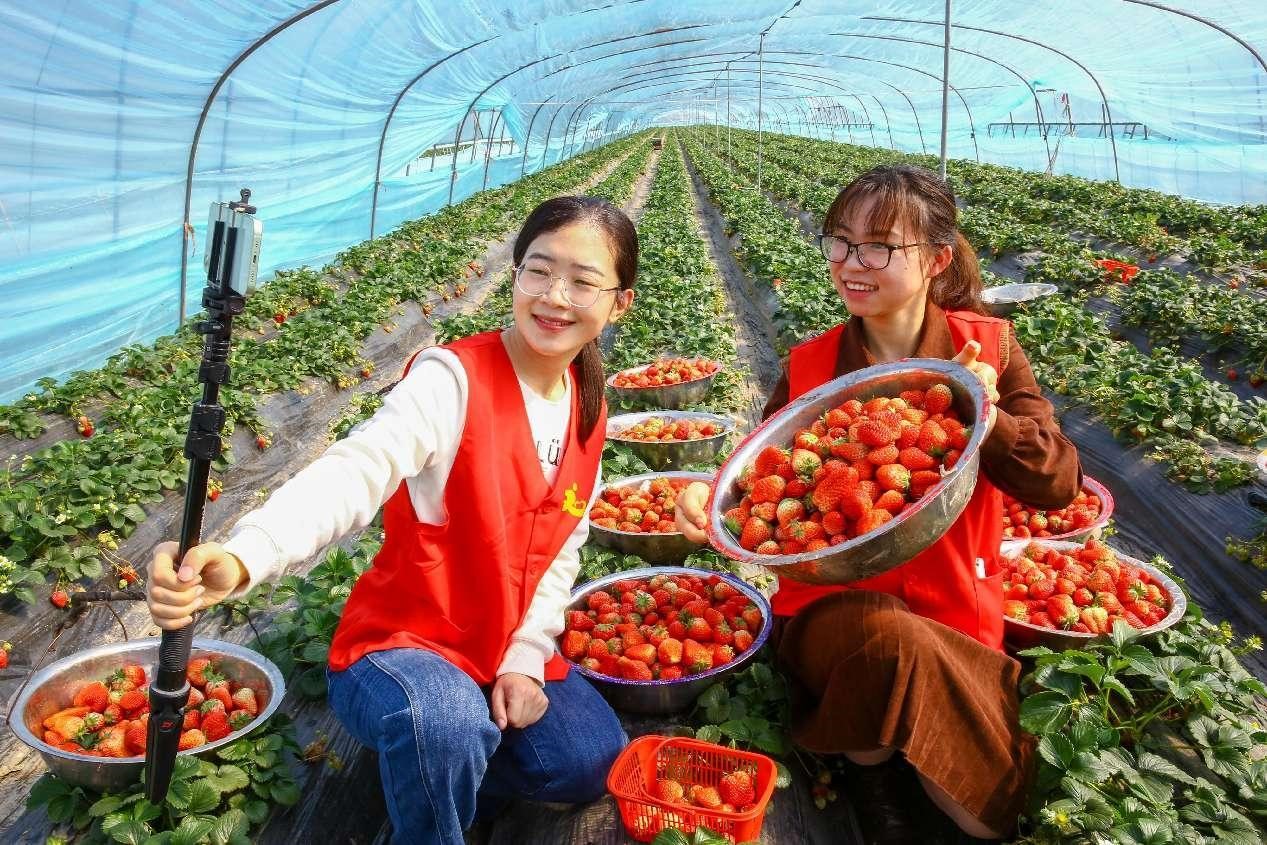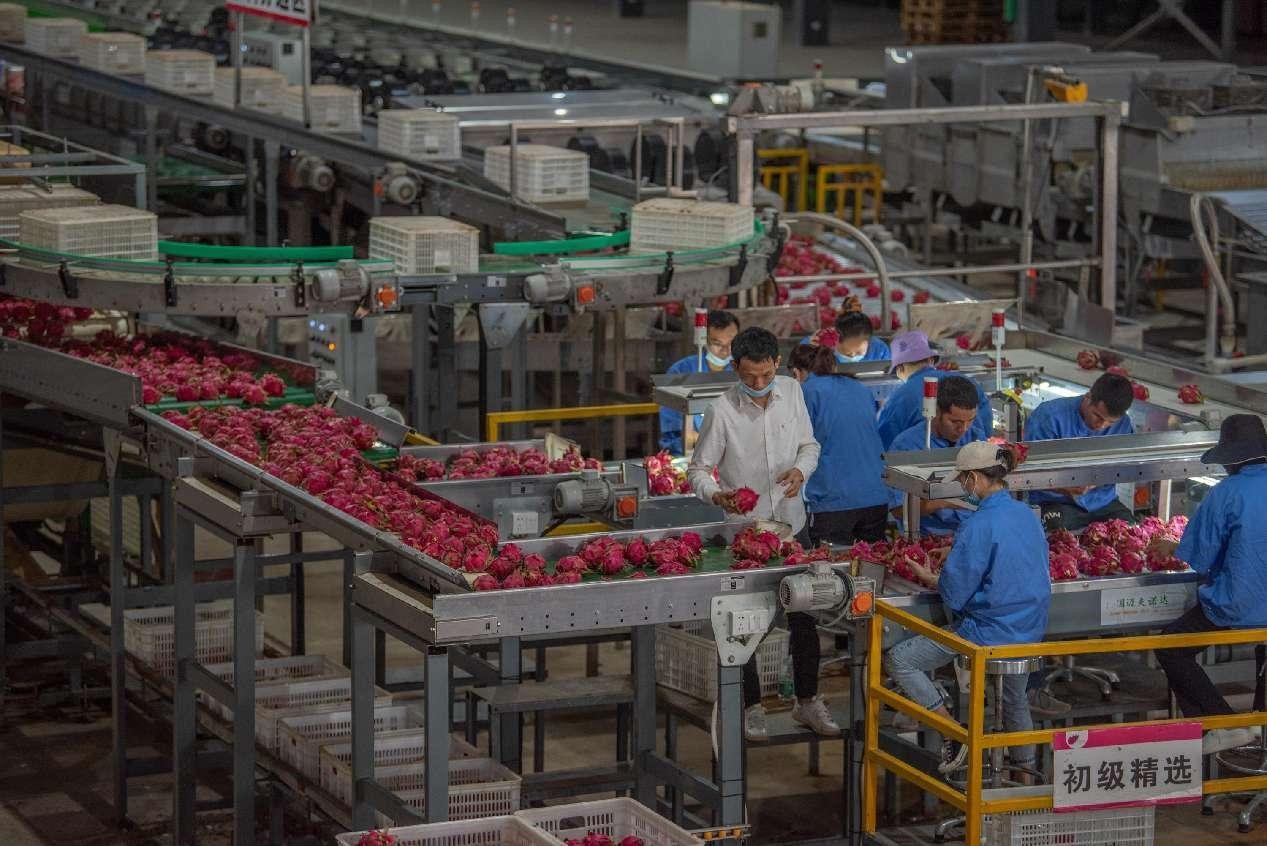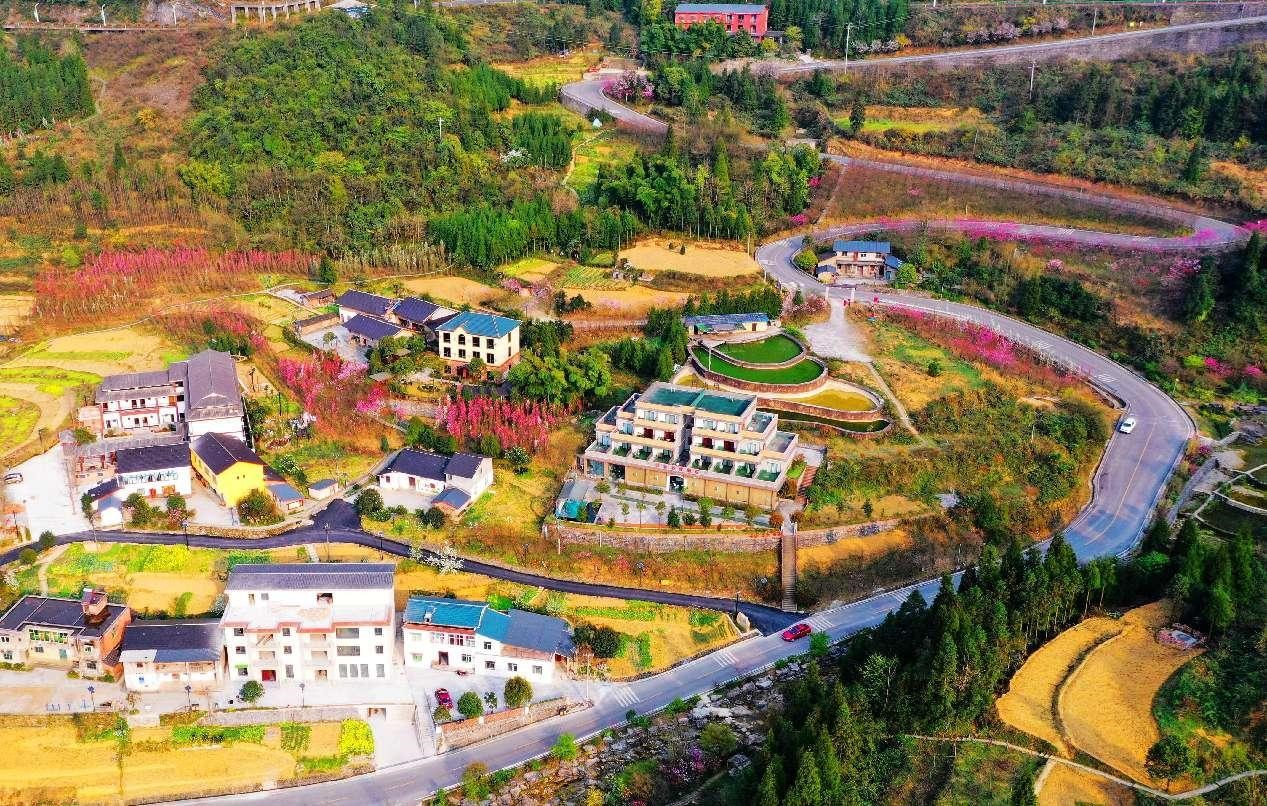Chinese cities gather pace in facilitating rural e-commerce
By Zhang Yikai, Ye Chuanzeng, Source: People’s Daily
In order to better leverage e-commerce to sell high-quality agricultural products to more consumers and make logistics services more efficient and cost-effective, various cities in China have carried out helpful explorations to enhance brand building and improve logistics system.
In recent years, flourishing e-commerce in vast rural areas across China has served as a new platform for the circulation of agricultural products, broadened the channels for farmers to increase their income, and stimulated the potential for rural vitalization.
As a matter of fact, many farmers have had trouble selling their high-quality agricultural products online.
Volunteers help pick and sell strawberries via livestreaming platform at a planting base in Banjing township, Rugao city, east China’s Jiangsu province, Feb. 24, 2022. (Photo by Xu Hui/People’s Daily Online)
Wuchang rice, a specialty of Wuchang city, northeast China’s Heilongjiang province, is one of China’s protected geographical indication (GI) products that enjoy great popularity with consumers. However, Yu Dianhong, a resident in Lujia village, Minle Korean ethnic township, Wuchang city, found it not as easy as he thought it would be when he started to sell home-grown rice online a few years ago.
Many consumers would question whether his rice was actually from Wuchang city. To assure online shoppers of the authenticity of his products, Yu often needed to show them a photo of his ID card.
For Yu, things started to change in 2015, when Wuchang city created a website to publicize information about products under the city’s rice brands and established a rice traceability and anti-counterfeiting system based on agricultural Internet of Things (IoT).
Only locally grown rice up to standard can be included into the system and obtain a traceability and anti-counterfeiting mark and QR code, according to Yu.
Workers sort and wrap pitaya at a factory in Dongfang city, south China’s Hainan province. The city has strived to build a pollution-free production base for tropical fruits and create a brand for green agricultural products. (Photo by Yuan Chen/People’s Daily Online)
“The website can help consumers easily confirm the authenticity of my products. And after scanning the QR code on the packaging, they can find out which village the rice was grown, who grew it, what variety it belongs to and what the quality report says,” Yu said, adding that the sales of his products have more than doubled after the establishment of the system.
Brand building brings rural e-commerce onto the fast lane of development. By making efforts to continuously promote the construction of regional public brands of agricultural products, cities can increase the appeal of local characteristic agricultural products and facilitate large-scale production, standardized management and industrialized operation, eventually improving the quality, efficiency and market competitiveness of rural e-commerce.
Besides brand building, smoothening the “last kilometer” in logistics services is also crucial for fresh vegetables, fruits and other products with strong seasonality and short shelf life,
In Zigui county, central China’s Hubei province, electric vehicles running on rails provide a solution to the transportation of fresh navel oranges grown in high mountains and steep slopes.
At the touch of a button, the electric vehicles can move to an orchard below the slopes from the roadside. After farmers load boxes of navel oranges onto the vehicles, they carry the fruits up hills along the rails within several minutes.
Photo shows winding country roads in Heishan township, Wansheng Economic and Technological Development Zone, southwest China’s Chongqing municipality. (Photo by Cao Yonglong/People’s Daily Online)
“Our base produces 250,000 kg of navel oranges a year. The transportation cost per kilogram of the fruit used to be 0.24 yuan, but it has now been cut to 0.1 yuan, which means a reduction of 35,000 yuan in total a year,” said Liu Guohua, manager of the base of a navel orange cooperative located in Yandengbao village, Guojiaba township, Zigui county.
Though nestled in high mountains and unsuitable for farming, Yandengbao village is an ideal place for the growth of navel oranges. However, due to poor transportation infrastructure, local farmers had to rely on manual labor for the transportation of navel oranges, Liu recalled, who finds the electric vehicles much more convenient.
In 2019, the village carried out electrification transformation of local power equipment. It set up a power grid and later built two electric tracks with a total length of 250 meters between orchards and roads.
“It took us 20 minutes to carry navel oranges up and down the mountains in the past, and now the electric vehicles can transport navel oranges from orchard to the roadside in four minutes,” Liu noted, adding that they no longer need to worry about safety hazards during manual transportation.
In Zigui, there are 588 routes for on-rail vehicles stretching 119,300 meters in length, which help transport navel oranges from more than 2,667 hectares of orchards in mountains to the roadside.
After the navel oranges are transported out of the mountains, the next step is to take them from villages to the market, for which Zigui county mobilized local express delivery companies, e-commerce enterprises, and rural comprehensive transportation service stations and built a village-level logistics service system.
Zigui’s navel orange industry has formed a virtuous circle with high-quality products, sufficient logistics services and a good market, pointed out Liu Haotian, an official with the e-commerce office under the bureau of science and technology, economy and information technology of Zigui county.
By improving weak links in rural logistics infrastructure and promoting the construction of the circulation system in rural areas, agricultural products in China will be brought to processing factories and people’s dining tables faster while rural e-commerce enjoys faster growth.















